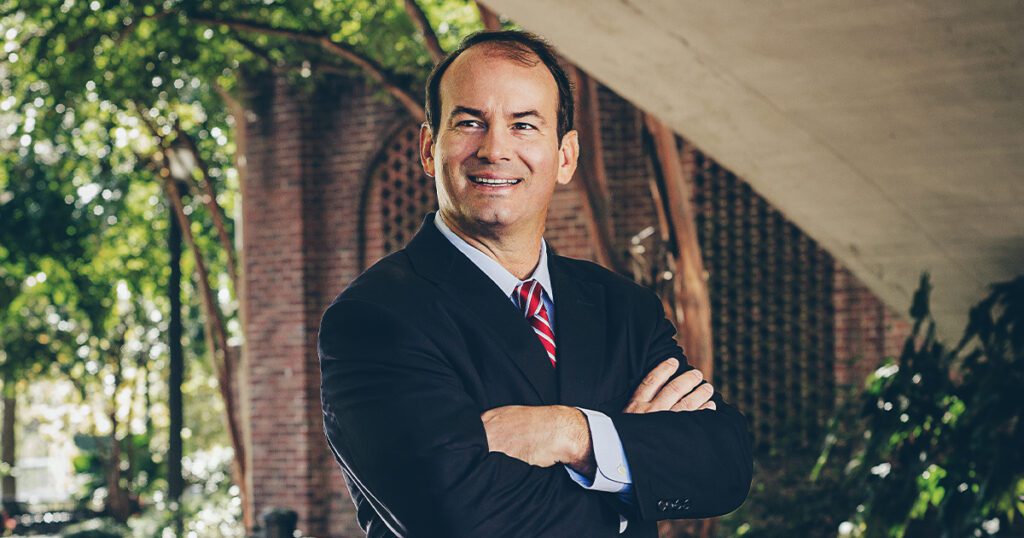As published in Clearinghouse Review – read the full article here.
November-December 2012
By Jo Watson Hackl
This article was first published in
46 Clearinghouse Review: Journal of Poverty Law and Policy 367
(November-December 2012)
copyright sign 2012 Sargent Shriver National Center on Poverty Law
As any lawyer who works with low-income people knows, increasing legal literacy can improve lives. Education in legal literacy helps low-income people become effective self-advocates, access available resources, and identify and work with legal professionals to attend to legal problems at their earliest, most easily resolved stage. Yet reaching people who can most benefit from legal literacy efforts is difficult. The target group for the information must be identified. Information about a technical legal topic must be translated into understandable language. The topic must be presented in a way that the audience perceives as relevant. People with legal needs may not perceive a problem as one that has a legal remedy or know how to access the legal system. Disseminating information to target group members in a form they are likely to absorb is another challenge. In the age of twenty-four-hour electronic access to the Internet, social media, and cable television, competing for attention can be difficult. Language barriers are an additional obstacle for many low-income families, whose school-age children often must serve as translators for their parents. These children are unlikely to be interested in or understand even the most user-friendly information on a legal topic. How, then, to reach these families?
This year the American Bar Association took a bold step to increase legal literacy with the publication of A Breath of Hope, its first book specifically designed for children. The book focuses on the plight of a small girl suffering from asthma because of mold in her family’s apartment that the landlord has refused to remediate. The child’s older brother works with a medical-legal partnership to get the mold—the source of the asthma trigger—eradicated. The book is a tool for increasing legal literacy; targets children at an age when they are likely to be receptive to legal literacy efforts; overcomes one of the challenges in reaching households in which the parents do not speak English; and highlights the work of medical-legal partnerships. The book shapes perceptions of lawyers and the judicial system and health care professionals and the health care system, helping create a positive image of them all and thus increasing the likelihood that readers will feel comfortable using these systems. A powerful client and patient education tool, the book has several creative and production choices providing insight into strategies that can strengthen other legal literacy initiatives.
A Breath of Hope was conceived and developed by Anthony Barash, former director of the American Bar Association Center for Pro Bono, while he was a fellow at the Harvard Advanced Leadership Initiative. In his pro bono work, Barash had observed that many non-English-speaking parents relied upon their school-age children to serve as translators in interactions with authorities and in seeking resources for their family. To focus legal literacy efforts only on the parents would be to miss an opportunity. Barash set out to create a legal literacy piece that would reach young translators and not only arm them with critical information but also create a sense of hope, self-empowerment, and confidence. After research and investigation, Barash decided to create a piece that would speak to readers in a familiar voice: a children’s picture book. In implementing the project, he went outside traditional legal education channels and worked with Jo S. Kittinger and Chuck Galey. Highly acclaimed, Kittinger is the author of over twenty children’s books, including The House on Dirty-Third Street, Rosa’s Bus: The Ride to Civil Rights, and George Washington Carver. She serves as a coadvisor for the Southern Breeze region (Alabama, Georgia, and Mississippi) of the Society of Children’s Book Writers and Illustrators, a professional organization. Galey is an award-winning illustrator of over fifty books for young children; his illustrations draw young readers into the story. By reaching out to industry professionals experienced in creating an emotional connection with young readers, Barash ensured that the book would connect with its intended audience. The project is also sustainable and scalable in that its format can be used to educate readers on other legal issues. Barash recently reported that health care providers have requested the book for their waiting rooms, and legal aid programs want to distribute it in their communities. Lawyers, doctors, teachers, and clergy members are suggesting topics for sequels. The book has been translated into Spanish. Barash and his team are at work on their next book, which will explore, through a child’s eyes, mental health advocacy for active-duty military service members and veterans and their families.
I began working on legal literacy in the early 1990’s as a volunteer with the Legal Services Agency of Western Carolina (now South Carolina Legal Services) to host and produce a local cable television show educating low-income people about practical topics such as how to avoid scams, how to buy a used car, and how to get a relative into a nursing home. At that time, one of our largest challenges was competing for viewer attention with fast-paced entertainment options. This challenge has only intensified in the ensuing years. The format and content of A Breath of Hope reveal strategies that can be used even in pieces meant for adult audiences.
A Breath of Hope is in hardcover and, at 8 x 10 inches and 32 pages, follows a traditional picture-book format., one likely to be familiar and thus its content trusted by young readers. The hard rather than soft cover conveys quality, durability, and longevity: the book is not some pamphlet to be read and discarded. Instead it is to be read again and again and passed on to others as a treasured gift. The hardcover also lends itself equally well to independent reading by the child or reading on the lap of a caregiver with whom the child might engage in conversation about the book’s topics. And, regardless of how the book is read, the picture book format allows for exploration of the topics raised in a natural setting as the book is incorporated into established story time and bedtime routines. Introducing the topics in a calm setting, well before any legal or health crisis is good because “[c]hildren who encounter the law more academically seem to have an easier time establishing a comfortable relationship with it than children who are forced into legal intimacy by a personal crisis.”
The cover, presenting an uplifting image of a brother and sister holding hands and skipping down an urban sidewalk, also fulfils traditional picture book expectations. The sister looks happily toward her brother, who firmly holds his sister’s hand and gazes ahead, looking toward the reader. The emotions communicated are hope and joy; the reader is invited inside.
The first person narrative avoids the distant third person and allows readers to picture themselves in the story. The older brother as the narrator allows the reader to experience the story from the point of view of an active problem-solver, not a victim. The acute accent on ”Mamá” and “Papá” suggests a Hispanic family setting. The brother of school age reflects the reality that, in many homes in which English is not the native language, the school-age children are the first generation to master English. The children receive instruction in English in school and often translate for older family members and help them navigate social service resources. With such enormous responsibility, these children naturally might feel overwhelmed and isolated from their school peers from English-speaking homes. By using a narrator to whom many children in immigrant families can relate, the book assures them that others are in the same situation. Making this character the hero of the story also helps instill a sense of pride and confidence in a reader who translates for family members.
The family lives in an old apartment building, a setting well known to low-income readers. Outside scenes feature an urban environment that could be any city neighborhood. Background illustrations are relatively spare. The characters and buildings are rendered realistically, communicating a story set in the real world, not in fantasy. All these elements allow readers to imagine themselves in the setting and as part of the action.
With the first two lines—“I hold Isabel’s hand and hum her favorite song. It doesn’t help. She gasps for each breath”—the reader knows that this caring older brother sees his sister’s asthma from a child’s viewpoint. The siblings convey bonds of love. The brother has been left alone with his younger sister in their apartment while their parents are at work. He faces a dilemma: the first time Isabel is having an asthma attack while in his care. His teacher has told him that he should call 911 in an emergency, but his father has said that ambulances are too expensive unless someone is dying. Isabel is too heavy for him to carry the three blocks to the hospital, so he must find a solution. He decides to use Isabel’s wagon to transport his sister to the hospital. The narrator is portrayed as a decision maker and problem solver. Children’s picture books traditionally feature the child as hero or primary protagonist, and this familiar format reinforces the sense of trust in readers. The narrator in a problem-solving role allows readers to imagine themselves in a similar active role.
Yet the narrator is not left solely to his own devices. At the hospital a nurse praises the narrator for doing a good job of getting Isabel to the hospital. As the doctor examines Isabel, the narrator meets with a hospital employee who asks about conditions in the apartment that might trigger Isabel’s asthma. “You’re an important part of Isabel’s medical team,” she tells him. The woman inquires about mold and describes signs of it in terms that any child can understand: “It looks like black dust growing on the walls or in the carpet.” The narrator explains that the apartment has mold but the landlord has threatened to raise the rent if he has to remediate the mold. The woman then introduces the narrator to Ms. Bowman, who is part of the hospital’s medical-legal partnership, and“[p]erhaps she can help.” When his mother arrives, the narrator translates for her. She is concerned about how much the hospital will charge for this help, and Ms. Bowman reassures the mother that she works on a pro bono basis — her work is free. Ms. Bowman then visits the home and, observing the water leaks and mold in the carpet, explains that mold is causing Isabel to be sick. Ms. Bowman also explains that the family can use the law to force the landlord to do what is right. Two days later, when the family receives a copy of a letter from Ms. Bowman to the landlord, the narrator says “I tell Mamá. ‘It says he must make repairs to our apartment and if he tries to raise the rent there will be trouble for him.’” These scenes reinforce the narrator’s role in his family, describe mold in terms that a child can recognize, introduce the concept of medical-legal partnerships, define the term “pro bono” in child-friendly terms, and present the power of the law in a positive, solution-oriented way.
Isabel’s medical problem is not insignificant. The percentage of Americans suffering from asthma reached a record high of 8.4 percent in 2010, up from 7.3 percent in 2001. Because asthma is often triggered by environmental conditions, the poor and disadvantaged are disproportionately affected. Yet many triggering conditions can be remedied. Through medical-legal partnerships, legal and medical professionals team up to integrate free legal services into health care settings and overcome the social determinants of health that create hardships for impoverished clients. Since the early 1990s these partnerships have worked on overlapping medical-legal problems such as mental health, housing, and violence. In 2011 nearly 300 medical-legal partnership sites served over 50,000 patients and their families. In many cases they facilitated remediation of substandard housing conditions to alleviate factors– such as mold– that exacerbate chronic asthma and other respiratory conditions. By focusing the narrative on a medical condition that can be cured through legal intervention, A Breath of Hope indeed offers hope.
Few fiction books for young readers feature lawyers as characters, and “the relative absence of lawyers as characters in children’s books may contribute to the strained relationships children have with lawyers.” Introducing the legal system as a friendly ally rather than an enemy, this book helps change that relationship by showing the power of the law to improve a family’s situation and celebrating the role of the child-translator working with legal professionals to produce a positive outcome.
The book ends with a family-centered resolution: “When I come home from school a few days later, workmen are all over our apartment. The carpet is ripped up and I can smell new paint! Goodbye mold!” The cracks in the wall are being repaired and repainted, and family members are embracing one another in the newly repaired apartment–on her father’s lap a happy Isabel being hugged by her mother, the narrator standing at the father’s other side, encircled by his father’s arm. The final page enumerates “Things You Should Know”; gives child-friendly information about renter’s rights and responsibilities, medical-legal partnerships and legal aid organizations; and lists websites and other resources. With a positive view of the legal system as a force for justice, readers thus are uplifted, celebrated in their role as family translator, and poised to apply the book’s lessons to their own situation.
The presentation, narrative choices, setting, characterization, and story arc together create a tool for legal literacy initiatives. Applied in other settings, these techniques can change perceptions for a new generation.






